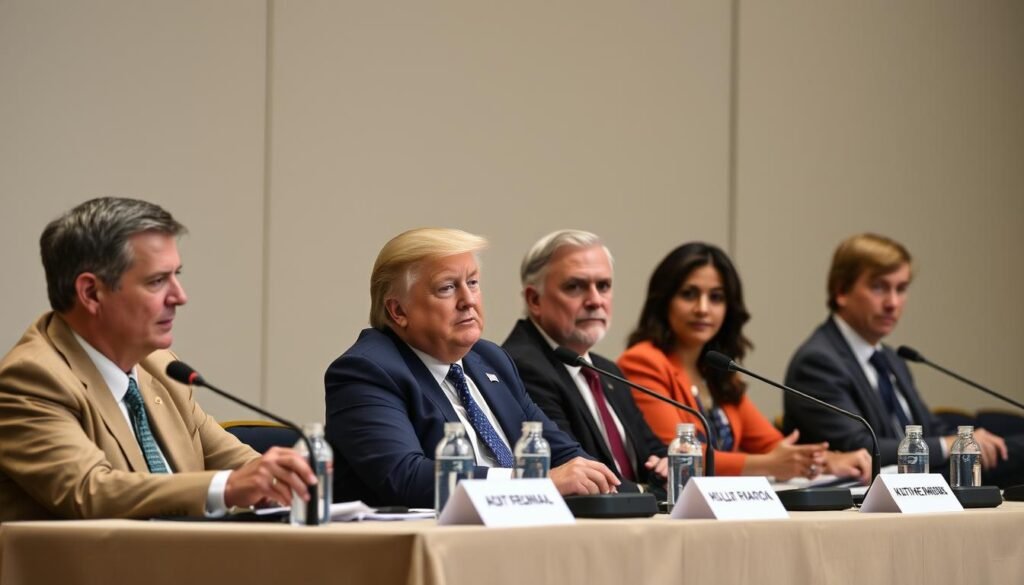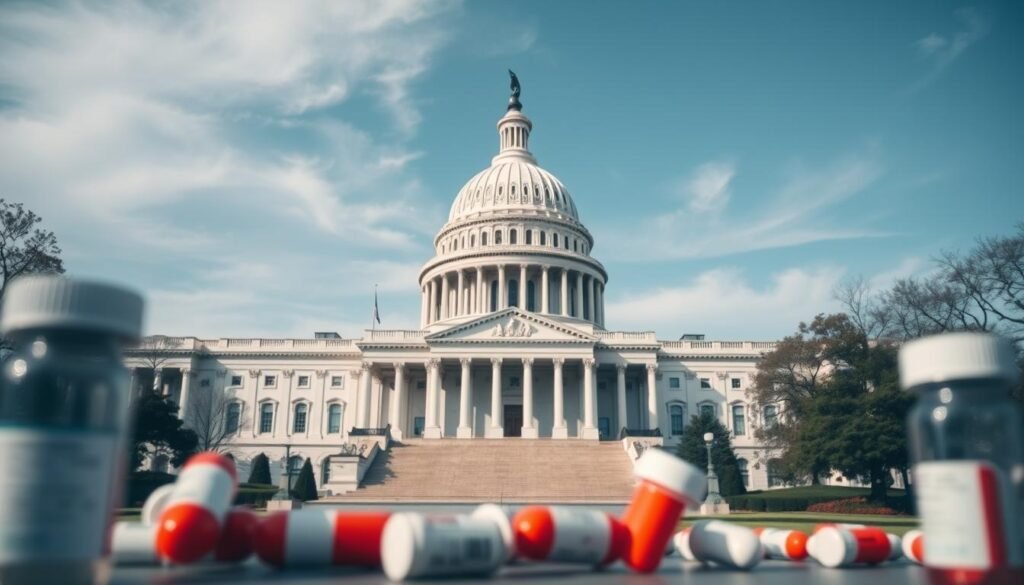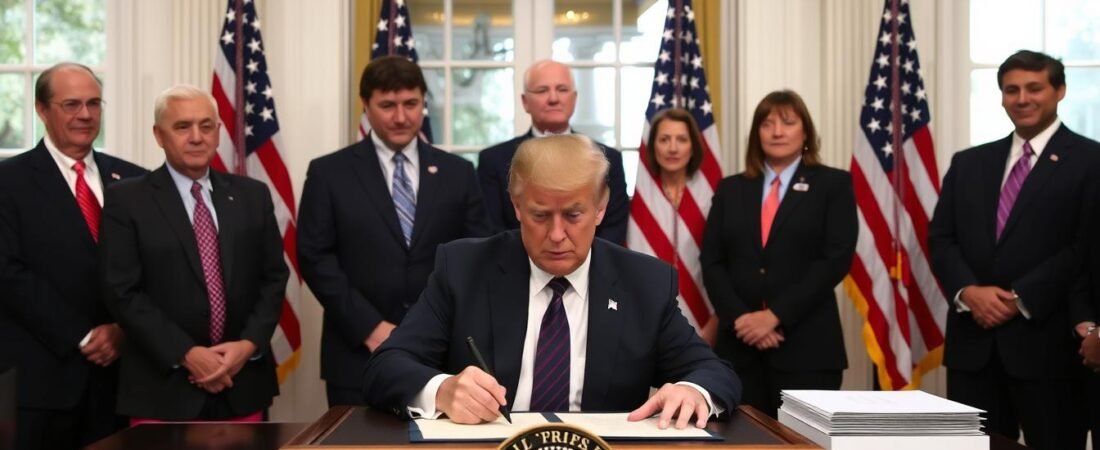President Donald Trump’s executive order on prescription drug prices has sparked both hope and skepticism across America. Promising reductions of “30% to 80%” almost immediately, the “Big Beautiful Bill” aims to align U.S. drug prices with those paid in other developed nations. But will these ambitious claims translate into actual savings at your pharmacy counter? This analysis examines the order’s potential impact, comparing it with previous administrations’ efforts and evaluating whether Americans can expect meaningful relief from high prescription drug costs.
Understanding Trump’s Prescription Drug Pricing Executive Order
On May 12, 2025, Trump signed an executive order targeting the long-standing disparity between U.S. prescription drug prices and those in other developed nations. The cornerstone of this policy is the “most favored nation” approach, which aims to ensure Americans pay no more for medications than the lowest price paid by any other country.
The order directs the Department of Health and Human Services to establish “clear targets” for price reductions within 30 days. If pharmaceutical companies fail to make “significant progress” toward these targets, the administration threatens to impose a pricing model that caps U.S. prices at the lowest rates paid internationally.
According to White House officials, the policy could potentially reduce drug prices by 59% to 90%, with weight loss medications like Wegovy, Ozempic, and Mounjaro among those targeted for price cuts.
Historical Context: Drug Pricing Across Administrations
This isn’t Trump’s first attempt to tackle drug prices. During his first term, he tried to implement a similar policy, which was blocked by a federal judge in 2020. To understand the potential impact of the current order, it’s helpful to compare it with previous administrations’ approaches.
| Administration | Key Policy | Implementation Status | Measured Impact |
| Obama (2009-2017) | Affordable Care Act provisions for generic competition | Fully implemented | Modest impact on generics; brand-name prices continued to rise |
| Trump First Term (2017-2021) | Most-favored-nation pricing model for Medicare Part B | Blocked by courts | No measurable impact |
| Biden (2021-2025) | Medicare price negotiation (Inflation Reduction Act) | Implementation begun; first price cuts effective 2026 | Projected 25-35% savings on negotiated drugs |
| Trump Second Term (2025-) | Expanded most-favored-nation pricing for all U.S. consumers | Executive order signed; implementation pending | Projected 30-80% reduction (administration claim) |
Biden’s Inflation Reduction Act authorized Medicare to negotiate prices for some high-cost medications, with the first round of price reductions set to take effect in 2026. Trump’s approach differs by attempting to apply international reference pricing more broadly and immediately, rather than through a gradual negotiation process limited to Medicare.
The U.S. Drug Price Disparity: By the Numbers
Americans pay substantially more for prescription medications than residents of other developed nations. According to a 2024 study by the RAND Corporation, U.S. prices for prescription drugs average 2.78 times higher than those in 33 other OECD countries. For brand-name drugs, the disparity is even more striking—U.S. prices average 4.22 times higher.
Common Medications: U.S. vs. International Prices
- Eliquis (blood thinner): $606 in U.S. vs. $114 in Sweden and $20 in Japan
- Humira (autoimmune): $5,800 in U.S. vs. $1,400 in Germany
- Insulin products: Average 10x higher in U.S. than in comparable nations
- Cancer medications: Often 2-3x more expensive in the U.S.
Factors Behind Higher U.S. Prices
- Limited government price negotiation power
- Extended patent exclusivity periods
- Complex rebate systems that obscure actual costs
- Fragmented insurance market with multiple payers
- Marketing expenses passed on to consumers
While the pharmaceutical industry often argues that high U.S. prices fund research and development for new medications, a 2023 study found that from 1999 to 2018, the world’s largest 15 biopharmaceutical companies spent more on marketing and administrative activities than on R&D. The study also noted that most new medicines developed during this period offered little to no clinical benefit over existing treatments.
Implementation Challenges and Timeline Realities
Despite Trump’s claim that price reductions would happen “almost immediately,” the executive order itself outlines a more gradual process:
- Within 30 days: Administration officials must determine and communicate “most favored nation price targets” to drugmakers
- Unspecified period: Evaluation of whether “significant progress” toward lower pricing has been achieved
- If insufficient progress: HHS Secretary must “propose a rulemaking plan” to impose most-favored-nation pricing
- Rulemaking process: Could take months or years before implementation
Joseph Antos, an emeritus health care policy senior fellow with the conservative American Enterprise Institute, described the order as a “wish list” that “hopes that manufacturers will unilaterally lower U.S. prices.” He added, “The legal authority to intervene in the market is unclear if this implausible scenario doesn’t happen.”
“Executive orders are wish lists. The legal authority to intervene in the market is unclear if this implausible scenario doesn’t happen.”
Legal challenges are likely to emerge, similar to those that blocked Trump’s first-term efforts. Additionally, if the administration aims to lower prices for all U.S. consumers—not just those on federal programs like Medicare—experts suggest that congressional legislation would be necessary, adding another layer of complexity and potential delay.
Expert Opinions: Will the “Big Beautiful Bill” Deliver?

Potential Benefits
- Could significantly reduce prices if fully implemented
- Addresses a clear market failure in U.S. drug pricing
- Bipartisan appeal of lowering drug costs
- Potential savings of 30-80% align with international price differentials
Potential Drawbacks
- Implementation timeline likely much longer than suggested
- Legal challenges could block enforcement
- May require congressional action for full implementation
- Could face opposition from Republican lawmakers traditionally against price controls
Andrew Mulcahy, a RAND Corp. senior health economist, noted that while the potential savings of “roughly two-thirds on what we spend now for drugs seems in line” with research findings, “the devil’s in the policy design and implementation details.”
Jonathan Cohn, who has written extensively on health care policy, offered measured praise for the executive order in The Bulwark, calling it “a serious policy initiative, one that credible people think could bring some relief on drug prices.”
U.S. Rep. Lloyd Doggett, D-Texas, was more skeptical, saying Trump “talks about lowering drug prices but fails to accomplish anything.” He characterized the order as “another press release that will offer consumers little or nothing” and criticized the approach of “begging Big Pharma to show some benevolence.”
Pharmaceutical Industry Response and Potential Impact
The pharmaceutical industry has pushed back strongly against the proposed pricing reforms. Stephen J. Ubl, president and CEO of PhRMA (the leading drug industry lobby group), warned that the policy “would mean less treatments and cures and would jeopardize the hundreds of billions our member companies are planning to invest in America.”
Industry insiders told Reuters that such pricing reforms are more troubling for drugmakers than other potential policy moves, such as tariffs on imported medicines. As the largest pharmaceutical market in the world, the U.S. is vital to industry profits.
“The ‘most favored nation’ approach is deeply flawed and would severely harm small and mid-sized biotech companies in the U.S.”
PhRMA argues that lowering prices domestically requires addressing what it sees as the root issues: other countries not contributing their fair share to R&D costs and intermediaries inflating costs for American consumers.
However, Trump claimed in a May 13 interview with Fox News’ Sean Hannity that drug company officials had told him “it’s time” to lower U.S. prices, presenting a different picture of industry sentiment than public statements suggest.
What This Means for Your Pharmacy Bill

Despite the bold claims, pharmaceutical experts state that the executive order will not immediately affect the prices consumers pay at pharmacies or through mail-order services. The complex nature of drug pricing in the U.S. means that several factors influence what patients actually pay:
Insurance Coverage
The amount consumers pay depends on their health insurance plans, which typically require either copayments or a percentage of the total pharmacy bill.
Rebate Systems
Drug prices often include complex, non-transparent rebates between manufacturers, pharmacy benefit managers, and insurers that are not publicly disclosed.
Implementation Timeline
Even if successful, the policy’s effects would take time to reach consumers, with the full rulemaking process potentially taking months or years.
John Barkett, managing director at the management consulting firm BRG and a former senior policy advisor in the Biden White House, stated the executive order will have “no immediate impact on the American consumer.” He explained, “The president thinks of pharmaceutical price differences between countries the same way he thinks of our trade imbalances with other countries. If we pay more than other countries, then he thinks we’re getting ripped off.”
Real-World Example: Consider a patient taking Eliquis, a popular blood thinner. Currently priced at $606 for a month’s supply in the U.S., it costs just $114 in Sweden and $20 in Japan. Under Trump’s proposal, the U.S. price could theoretically drop to $20—the lowest international price. However, what the patient actually pays would still depend on their insurance coverage, and any price reduction would only occur after the full implementation process.
The Legislative Landscape: Congress and the “Big Beautiful Bill”

If Trump wants reduced prices to benefit all U.S. consumers—not just those on federal programs like Medicare—experts believe Congress would need to pass new legislation rather than relying solely on executive orders. This presents additional challenges:
Would Congress support price controls?
Historically, “federal price controls are anathema for many Republicans in Congress,” according to Joseph Antos. This ideological resistance could create obstacles even with Republican majorities in one or both chambers.
How does this compare to Biden’s approach?
Biden’s Inflation Reduction Act empowered Medicare to negotiate prices for specific high-cost drugs, with the first round of reductions set for 2026. Trump’s approach aims to be broader and faster but may face similar legal and practical challenges.
Could this be a bipartisan issue?
Drug pricing reform has attracted support from both parties, with Sen. Bernie Sanders (I-VT) making it a cornerstone issue throughout his career. However, the specific mechanisms for achieving lower prices remain contentious.
The executive order’s implementation will also depend on the actions of Health and Human Services Secretary Robert F. Kennedy Jr., who has been directed to set “clear targets” for prescription drug price reductions and potentially develop regulations if voluntary compliance isn’t achieved.
Conclusion: Will Prescription Drug Prices Really Go Down?

Trump’s “Big Beautiful Bill” presents an ambitious vision for lowering prescription drug prices in the United States. The potential savings—30% to 80%—align with the actual price disparities between the U.S. and other developed nations. However, the path from executive order to lower prices at your local pharmacy is complex and uncertain.
The executive order’s success will depend on several factors: the pharmaceutical industry’s willingness to voluntarily lower prices, the administration’s legal authority to enforce price controls, potential congressional action, and the inevitable legal challenges that will follow. Even under the most favorable circumstances, meaningful price reductions would likely take months or years, not the “almost immediate” timeline initially suggested.
For now, Americans should remain cautiously optimistic while understanding that the executive order represents the beginning of a process, not an immediate solution to high prescription drug costs. As this policy develops, staying informed about its progress and implications will be essential for anyone concerned about healthcare affordability.
Take Action on Drug Pricing Policy
Make your voice heard on prescription drug pricing issues by contacting your representatives and staying informed about policy developments.
